SAW II (2005)
A detective and his team must rescue eight people trapped in a factory by a man known as Jigsaw.
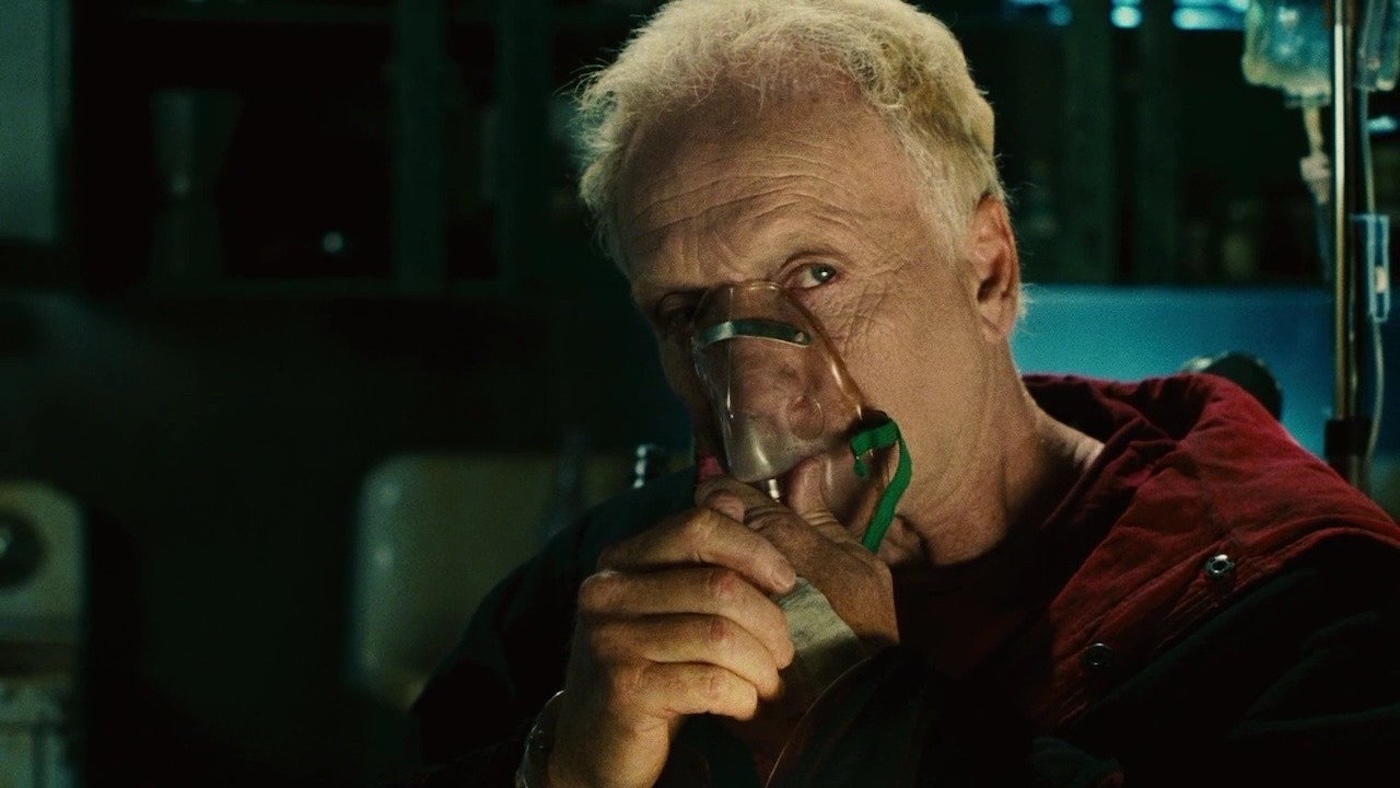
A detective and his team must rescue eight people trapped in a factory by a man known as Jigsaw.


“A trap you can fall into with sequels: thinking that if you change the location, make it one year later and up the ante a bit all of a sudden you’ve got a different film. Really, you’re just repeating yourself. You’re making Teen Wolf Too…”—Leigh Whannell, writer-actor.
Lionsgate Films bet on two Australian newcomers, James Wan and Leigh Whannell, to make a $1M-budget horror film called Saw (2004). A film so deceptively simple it promised audiences that in 100 minutes, a man was going to saw off his foot. Everyone won big as it made just over $100M at the box office, and while not attracting critical praise, worldwide audiences were hooked by that deceptively simple thought: would I saw off my foot to survive?
Thoughts on a sequel were a no-brainer… except Lionsgate found their blossoming creatives had already jumped ship to produce Dead Silence (2007) with Universal. Contractual obligations would be the diplomatic reason, but Whannell was never a diplomat. Deleting his personal blog after sharing the nightmarish production with Universal, he casually described the offer of Saw II as akin to “asking a woman who’s just had a Caesarean section if she wants to have another baby.”
Whannell, himself “all Saw‘d out,” did predict the near future. By Saw IV (2007), the marketing gimmick boasted (or threatened) ‘If it’s Halloween, it must be Saw.’ Every year a new sequel with new games and new victims, each time upping the ante with gorier gore and twistier twists. His sequel analogy was that replacing Michael J. Fox with Jason Bateman was a fatal misunderstanding to recapture the magic.
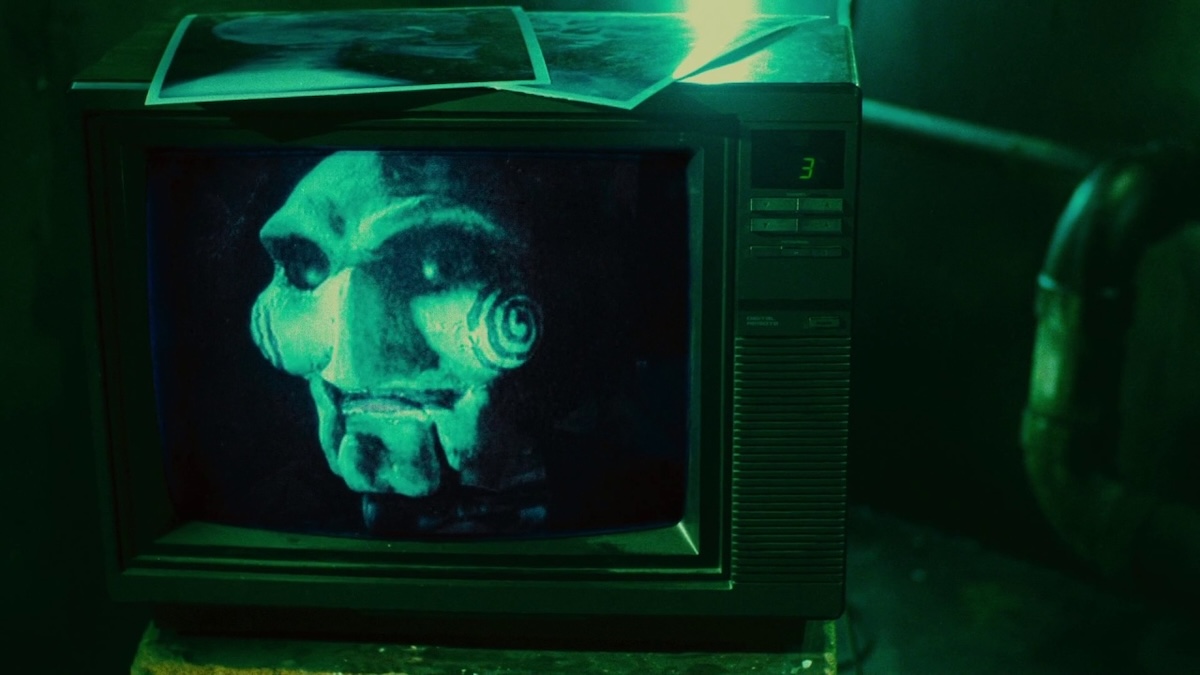
Saw II lives up to the superb first finale revealing the Jigsaw killer is talented veteran actor, Tobin Bell. Restrained to laying on a bathroom floor the entire runtime, this sequel finds SWAT arresting him only ten minutes in. The unflinching madman calmly finishes his cereal and informs them they won’t be leaving until his new game is over. Technically in a majority of scenes before, Bell now effortlessly takes centre stage as the charismatic star of the franchise.
Bell wasn’t alone in returning—cinematographer David Armstrong, editor Kevin Greutert, and composer Charlie Clouser were all instrumental in capturing the 2000s horror-grunge aesthetic. And to keep things cohesive, Whannell did return to rewrite the script that Lionsgate Films had acquired. Like almost every Die Hard (1988) sequel, the basis for this first follow-up was an entirely original film by newcomer Darren Lynn Bousman.
“I had written a script called The Desperate. It was kind of scary because everyone was turning it down because ‘it was too close to a movie called Saw at Sundance; not interested.’ Everyone was saying that except for this one company and they were going to make it in Germany for $1M. I was meeting with DP’s and David Armstrong was the first one. He said, ‘Can I share your script with somebody?’ The next day, Greg Hoffman called me, the producer, ‘You’re not doing this in Germany; you’re going to come to my office tomorrow.’ I had panic attacks every night. If I was going to make The Desperate, the expectations would have been down here. So, if I make a good movie like Saw, people would see it; if I make a bad movie, it goes to a shelf and no one sees it. My email address got out, and I was getting letters from people begging me not to kill the franchise, don’t make a PG-13 Saw II, don’t do this, don’t do that. there was a huge weight on my shoulders.”—Darren Lynn Bousman, writer-director.
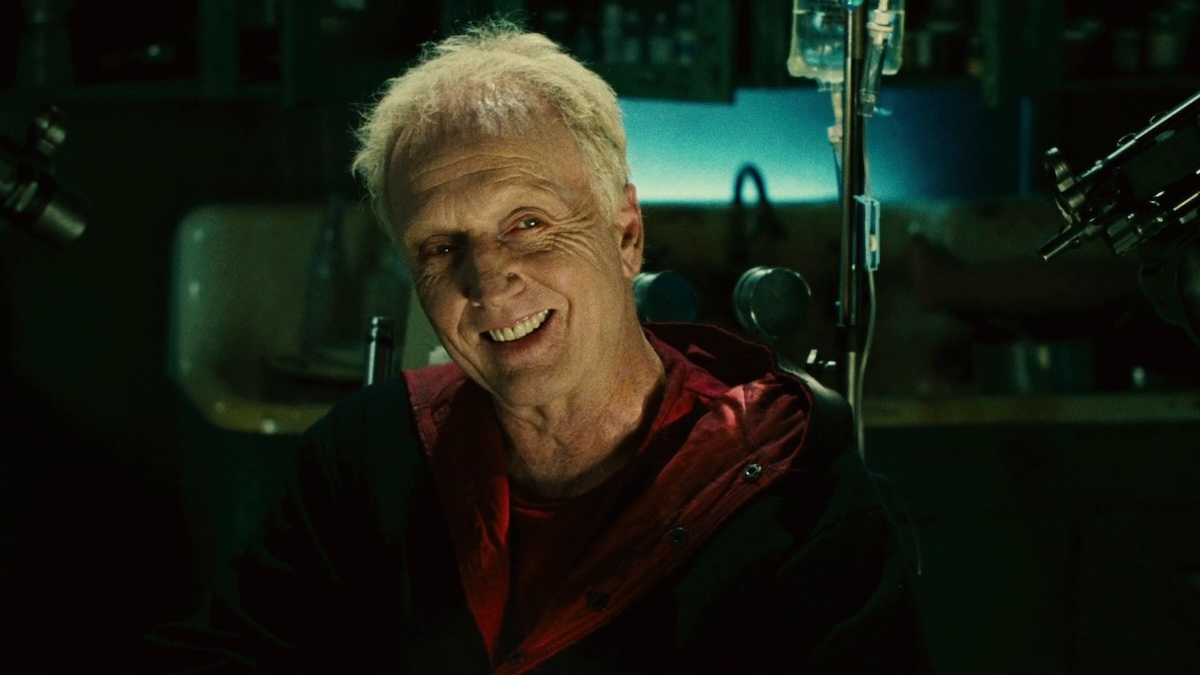
Most sequels have the inherent burden of being twice as good. Most horror sequels are considered twice as bad. Bousman had the weight of a $4M budget—four times the original. That film starred two people trapped in a single location. Saw II jumps the victim list up to eight people trapped in a huge house with every room more dangerous than the last. To say the numbers aren’t exact is to give away that the ensnaring SWAT raid is led by the last but not least victim, Det. Matthews (Donnie Wahlberg).
Of course, he’s given the clue leading him there from the first victim (Noam Jenkins) in the now obligatory opening trap. Horror fans don’t have the patience for blood, plus diving head-first into gratuitous violence gives them no time to question if being a police informant is a bad thing. Snitches get stitches in Jigsaw’s world. Just nobody ask him how he knows all these SWAT members have baggage.
The Jigsaw “I’ve never murdered anyone in my life” killer spends most of the film sat opposite an exceedingly irate Matthews. His only initial vice is a strained relationship with his son Daniel (Erik Knudsen). This dad’s already been tested after bailing out the moody shoplifting teen who’s taking his parents’ divorce hard. Jigsaw believes the best solution is to throw the kid into a house with hardened criminals as it fills up with deadly nerve gas. It’s understandable why Matthews has had enough of this dude; Jigsaw’s smug aura mocks him for an entire hour before revealing the real connective tissue behind this game.
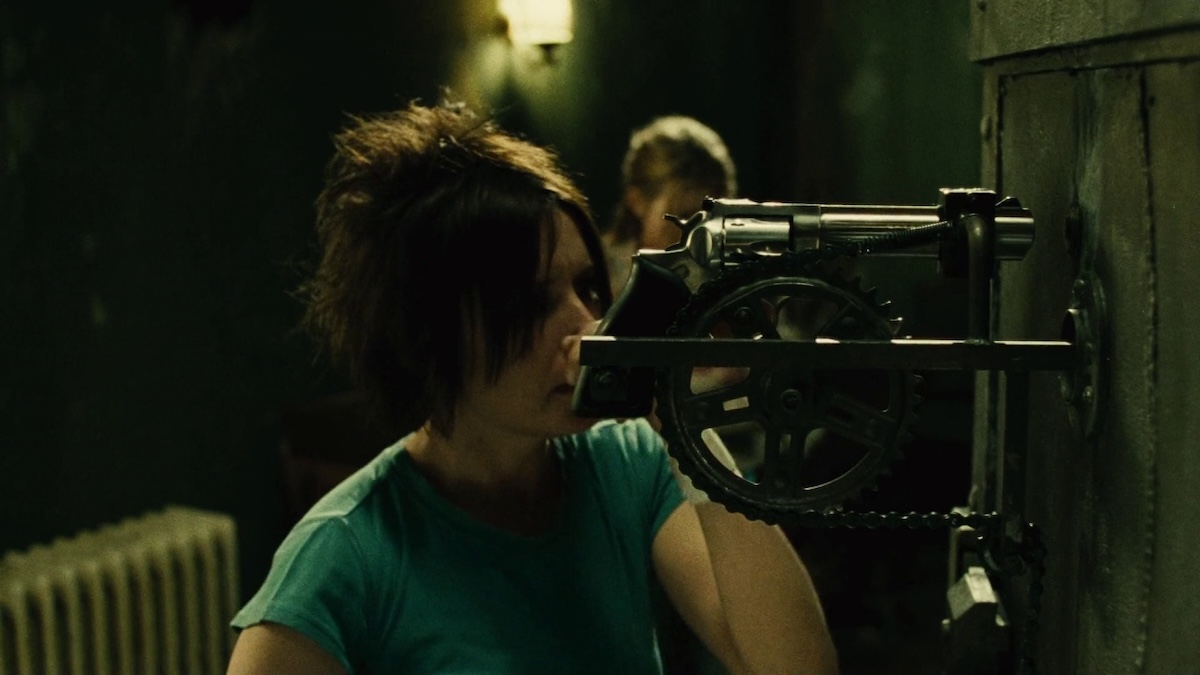
One minor complaint of Saw was the rote Se7en (1995) cribbing of the cop procedural busywork. Danny Glover’s involvement becomes ever more tangential with the audience waiting to get back in the bathroom. Sequels pile in so many police and FBI that it feels like scrolling through all those clips of Blue Bloods and The Rookie that engulf Facebook. Saw II threads the needle with a clear, tortured lead who fights and fulfils Jigsaw’s philosophies in equal measure. The first of many swings at social commentary, a grimy mirror is hoisted between the two in their moral stand-off—both aiming to ‘serve the people’ through merciless victimising of those struggling to get by.
Their game demands no bloodshed or instruments of self-mutilation but is nevertheless devastating as a father is forced to listen to self-righteous bullshit while tormented by the live-feed of his dying son. The teary-eyed Matthews is exhausted battling the very same unimpeachable state that he’s weaponised against so many innocents. Fighting every stage of grief, he threatens and pleads and receives no recourse but a mocking smile. Bell’s resolute commitment to the character and script elevates the individuality of one man’s will into an insurmountable certainty. Jigsaw seeks to prove that “the law harms those most vulnerable and in need of its protection.”
The most enduring aspect of Saw is that proving how wrong others are becomes the metric by which people consider themselves right. Jigsaw is gleefully spiteful toward Matthews for two agonising hours. Changing Daniel’s phone message and asking for water by gently shaking a plastic cup in Matthews’ face are both laugh-out-loud moments in unnecessary pettiness. He even handwaves murder charges when held dead to rights with, “putting a gun to someone’s head and forcing them to pull the trigger is still murder.” Like an indignant child, Jigsaw smirks back, “since when is force a problem for you,” in one of the funniest examples of the ‘I’m rubber, you’re glue’ defence. Later sequels take his playground excuse as gospel, but this first follow-up is a catch-22 that either they both face culpability or absolve responsibility.
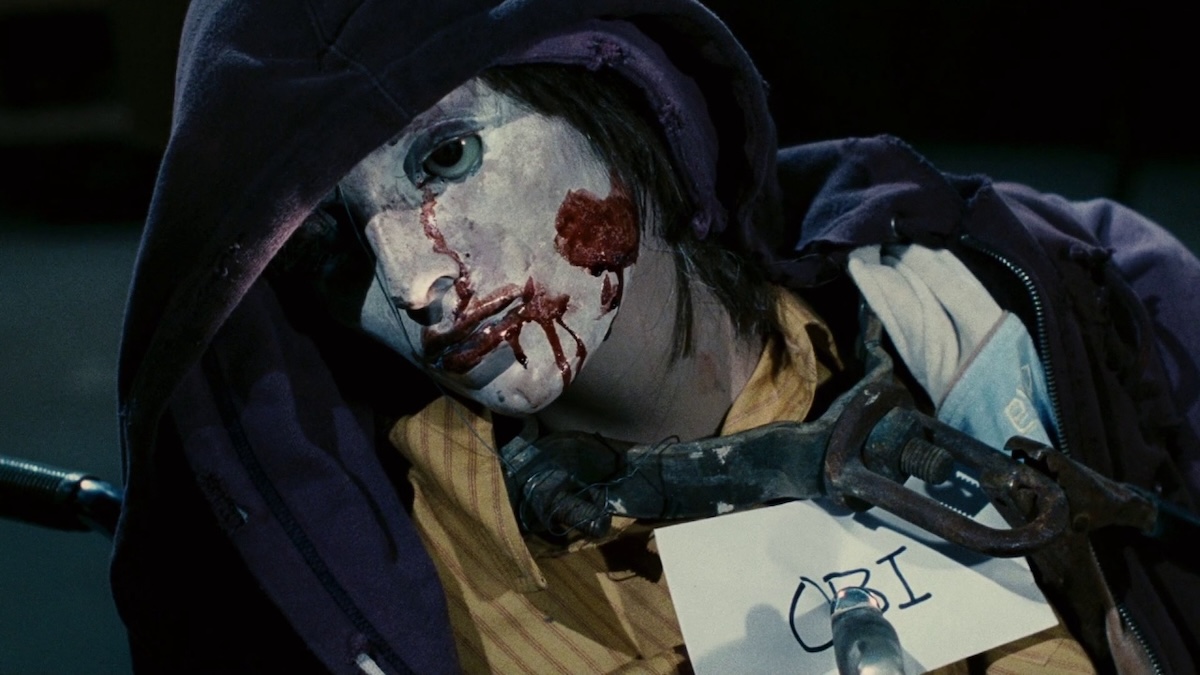
“We had a triangle, Darren and Donnie and me, and we would go over these scenes, not on the set, in a restaurant [or] whatever. We thought we had it and I’d say, ‘okay now, we need to learn these words because Jigsaw doesn’t shut up.’ The phone would ring and they’d say, ‘But what if?’ So, it was this constantly evolving thing. We would try to refine the scenes so that it was more relationship-oriented and more stakes-oriented and not just informationally-oriented. And that worked out well. They say a sign of intelligence is be willing to say you don’t know, and Darren didn’t force it.” —-Tobin Bell (Jigsaw) in Saw II.
All this moralising is grand, but Jigsaw did promise there’d be blood. Most tests, however, don’t bring the gore. The furnace that Obi (Timothy Burd) must climb into does what you’d expect. Addison is left to a slow, agonising fate with both hands caught in razor-blade traps. The needle pit is a fan favourite and elicits the same itching discomfort as sawing off your foot. Unlike the others, which have devious workarounds missed in the panic, there’s no alternative to getting in the pit. Well, the intended victim, Xavier (Franky G), finds a way by tossing in Amanda (Shawnee Smith).
Foam peanuts, slime for added grossness, and 120,000 syringes with fibre-optic tips, many thrown in ‘needle-lessly’—-but even knowing that doesn’t lessen the anguished cries of Smith. Thrashing through unimaginable pain, it’s no mistake Amanda is the only one to succeed in their most viscerally upsetting trial.
It seems all too brief how few traps there are. If you ignore incidentals like Gus (Tony Nappo) getting his brains blown out with the old gun-behind-the-keyhole trick, or the first SWAT team having their shins splintered in the electrified stairway. Jigsaw’s a malicious prick with those. Where Saw II succeeds best is the unrelenting pressure of every little thing engineered for emotional conflict. The Rube Goldberg machinations play out exactly as Jigsaw predicts, but the climactic thrills build on the unpredictability of free will. Amanda wears her heart on her sleeve when Laura(Beverley Mitchell) succumbs to the nerve gas before even finding her test, along with finding Jonas (Glenn Plummer) murdered by the spiked baseball bat provided by Jigsaw.
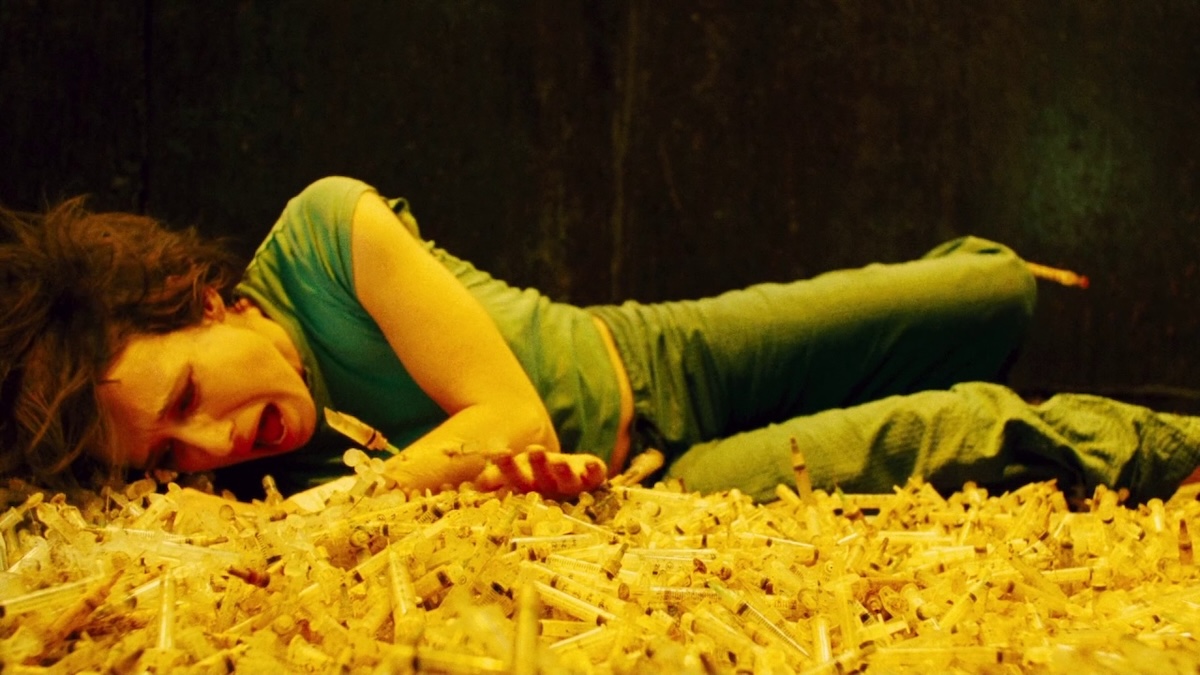
Saw does feature tangential traps for cheap shocks, but the majority focus is on a psychological nightmare. Can’t cut through your leg? Starve in the dark. Saw II affirms the slasher formula where character work and nuance is curtailed for routine dopamine rushes. Crucially, not in the anticipation of potential success but in the morbid expectation of failure. This vicarious pleasure proves paradoxical as we can’t interpret Jigsaw’s good intentions when being directed to root against the protagonists. As Amanda protests, “he wants us to survive!” But do we?
With four times the victims, the ensemble is relegated to supporting cast, and they only just about achieve that. One-note personalities like cartoonish meat-head Xavier stand out over no-note nothings like the two women who are… there. Backstory, deleted for pacing, shared in interviews hardly brings revelations. Sex worker Addison caused Matthews’ divorce; leave her to bleed to death. Gus was an embezzler; get shot in the face. Laura was a shoplifter! For stealing a $20 lip-gloss, Jigsaw wants her to tear off both her arms, presumably. Doe-eyed Daniel is the entire catalyst for both the inside and outside games and does nothing but be bait.
The best Det. Kerry (Dina Meyer) and Sgt. Rigg (Lyriq Bent) offer is playing the sporadic angel and devil on Matthews’ shoulders. Rigg, at the very least, leads the charge to the obvious Silence of the Lambs (1991) ‘wrong house’ surprise. The returning “Jigsaw expert” from the first, Kerry stands around for the entire test waiting for other experts to arrive too late. Her expertise peaks at prompting Matthews to tear up Jigsaw’s work in front of him; it gets no reaction.
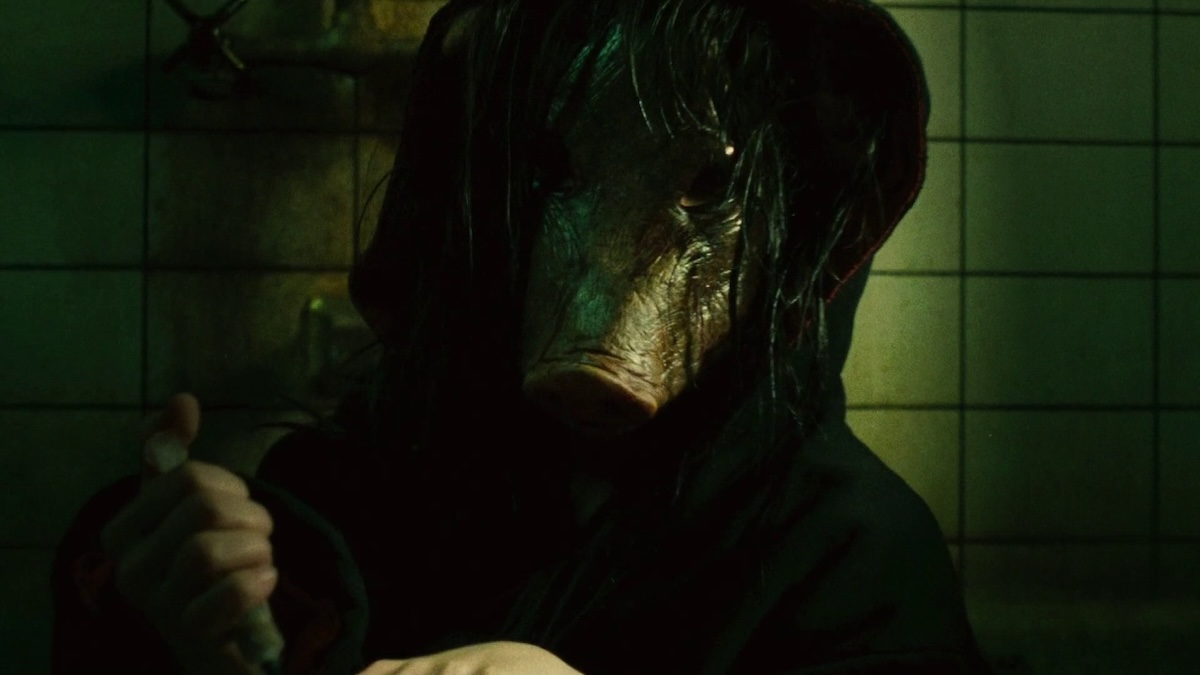
These shortcomings are transparent in the critical reception, albeit not much lower than the middling aggregate of the first. The original novelty had been regurgitated for profit, but one must admit the sordid entertainment value hasn’t been lost over time. Nit-picks are more apparent but the rollercoaster still soars toward the crescendo of revelations. Greutert deserves his praise for wrestling such audacious non-linearity all the while ramping up that James Wan directorial flair. Not since Un Chien Andalou (1929) has so much editing heightened a knife to an eye.
Bousman operates in tandem by ensuring that relentless pacing through inspired flourishes like directing Matthews to walk out of his apartment and into a crime scene. As in, literally, Donnie Wahlberg passes through the adjoining door between two sets in one continuous shot. Credit to David Hackl, production designer and future Saw V (2008) director, for constructing 27 sets in three weeks including the legendary bathroom rebuilt from scratch.
Finding ourselves here again is the opportune time for the iconic Saw twist music from Clouser, “Hello Zepp” and “Cut Necks” respectively. But this is Saw II, and that means double the twists and an even more bombastic rendition titled “Hello Eric.” Controversial hot take: Saw II has an as good, if not better, twist ending than the original.
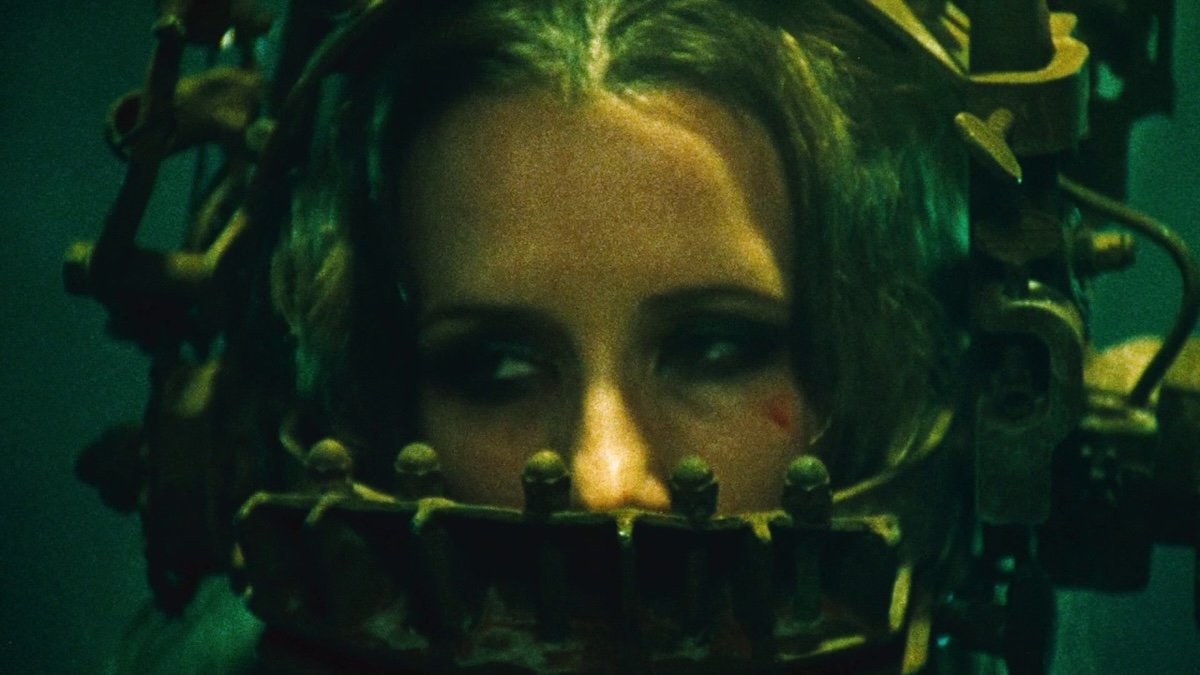
The franchise would commence a futile one-upmanship by exaggerating the genius omniscience of Jigsaw to parodic levels. The key to Saw is everything veering on the edge of disaster and spiralling headlong into chaos. Sequels turn Jigsaw into Raven Baxter, and Saw II rides the precipitous line of getting away with it. Saw ending with him walking away is unforgettable but, really, did he need to be there? His involvement in Saw II is integral in every aspect; even besting SWAT with his pre-recorded trickery, he still goads Matthews into a savage beating that very likely exacerbates his deathly condition in Saw III (2006). Everything happens for a reason and cause always has consequence. That’s so Jigsaw.
“When it made as much money as it did they started talking about a sequel. Wow, this guy on the floor is going to blossom like a flower, which is what he did in Saw II. We got inklings of stuff, and you’re still getting inklings. You’re not ever going to get the whole thing right there, because 1. I don’t think they know, and 2. It’s not fun that way. What captures the imagination of Saw fans; they want to know more, it’s nice for them that it keeps moving along.”—Tobin Bell, 2006 interview
Bell was less prescient than his character, as the Saw franchise would leave no chapter left unwritten in the life and times of Jigsaw. After seven excruciating years, he’d resemble Hans Moleman in how much misery and pain an old man can take. Man Getting Hit by Football has nothing on the cancer, insurance denial, suicide attempt, miscarriage, marital strife, blood boarding, and medical scams this poor bastard takes. That’s the initial franchise run. Lionsgate every so often finds a new chapter to tell in the never-ending telenovela that is Saw.
Far from game over, the ongoing franchise revivals are due to chasing the US box office of $87M being the highest grossing Saw film to date. Only beaten in worldwide sales of $153M by Saw III, which made $165M. The real winner is Darren Lynn Bousman who helmed both, followed with Saw IV (2007), and later Spiral (2021). And if you haven’t had enough headspins for one Saw retrospective, don’t forget Saw X (2023) canonically takes place between this and Saw.
CANADA • USA | 2005 | 93 MINUTES (THEATRICAL) • 95 MINUTES (UNRATED) | 1.85:1 | COLOUR | ENGLISH

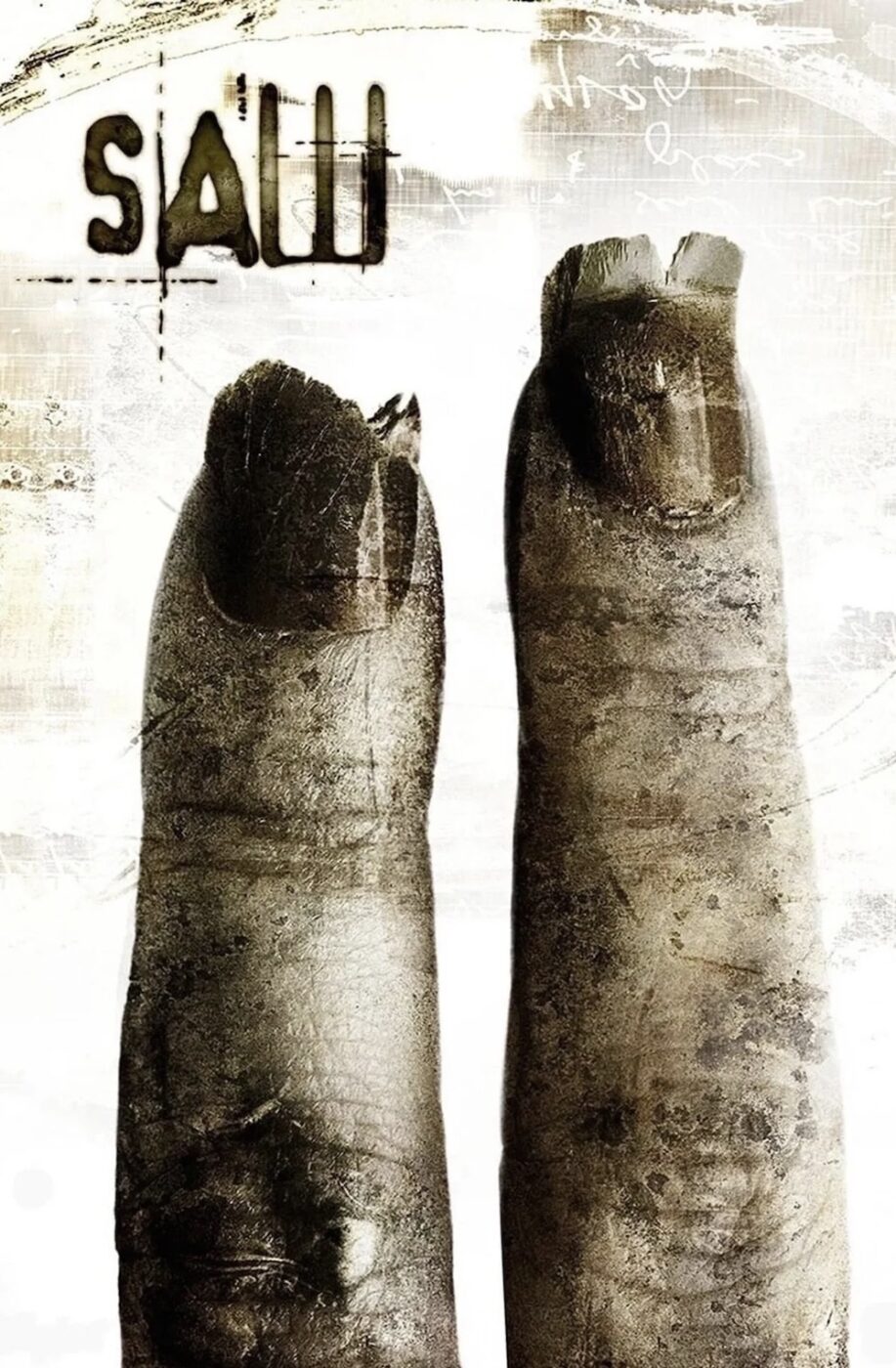
director: Darren Lynn Bousman.
writers: Leigh Whannell & Darren Lynn Bousman.
starring: Tobin Bell, Shawnee Smith, Donnie Wahlberg, Erik Knudson, Franky G, Glenn Plummer, Emmanuelle Vaugier, Beverley Mitchell, Timothy Burd, Dina Meyer & Lyriq Bent.
